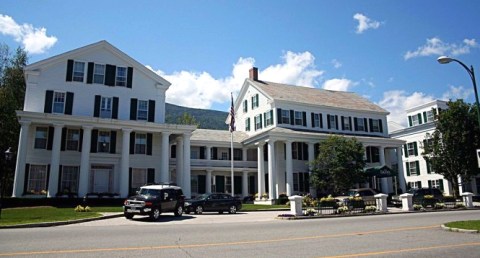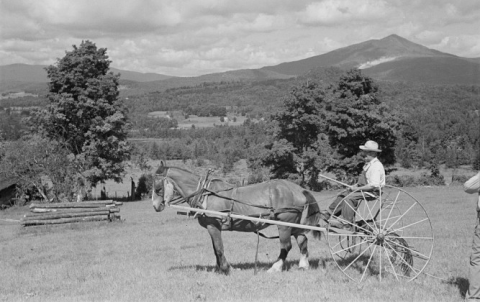You'll Want To Visit These 10 Houses In Vermont For Their Incredible Pasts
Vermont is home to several historic homes that once housed individuals who significantly influenced the course of history – for both our state and for the nation. The following homes are worth a day trip for both Vermonters and visitors to tour and temporarily travel back in time.
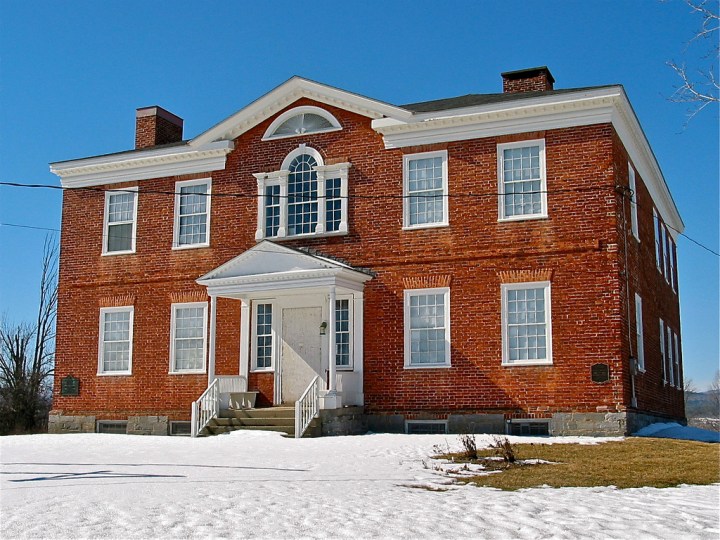
John Strong first came to Vermont in a horse drawn sleigh from Salisbury, Connecticut, at the age of 27, and in 1765 he built a cabin in what is now the town of Addison, the foundation of which can still be seen at the Daughters of the American Revolution (DAR) State Park. In February 1766, John moved his wife, Agnes, and three small children, Asa, Samuel and Polly, to the new settlement in Addison. There they encountered the hardships common to pioneers – wild animals, harsh weather, illnesses and unfriendly Indians.
In 1777, while John was fighting in the Revolutionary War, the family was warned that a large band of Indian and Tory forces was coming to destroy the settlement and they fled toward Dorset, where they remained until the end of the war. John represented Dorset in the Legislature from 1779 to 1782 and was elected Assistant Judge for Bennington County in 1781 and he continued to prosper through the years. By 1795 he started construction of a substantial and distinctive brick home, reflecting his stature in the community.
The elegance of John’s Federal style mansion illustrates the rapid economic shift that took place in the region from the time that he built his austere cabin. This two hundred year old home of a Revolutionary Patriot and his family occupies a unique position in the Lake Champlain valley – a region rich in heritage and history. It is the oldest home on the Vermont side of Lake Champlain open to the public and maintained as a museum. The home retains its original structure and contains a collection representing five generations of a prominent Vermont family. Thomas Keefe, preservation architect, stated in a 2006 report, "This is an extraordinary building, historically very significant on a statewide – even regional – level."
In 1777, while John was fighting in the Revolutionary War, the family was warned that a large band of Indian and Tory forces was coming to destroy the settlement and they fled toward Dorset, where they remained until the end of the war. John represented Dorset in the Legislature from 1779 to 1782 and was elected Assistant Judge for Bennington County in 1781 and he continued to prosper through the years. By 1795 he started construction of a substantial and distinctive brick home, reflecting his stature in the community.
The elegance of John’s Federal style mansion illustrates the rapid economic shift that took place in the region from the time that he built his austere cabin. This two hundred year old home of a Revolutionary Patriot and his family occupies a unique position in the Lake Champlain valley – a region rich in heritage and history. It is the oldest home on the Vermont side of Lake Champlain open to the public and maintained as a museum. The home retains its original structure and contains a collection representing five generations of a prominent Vermont family. Thomas Keefe, preservation architect, stated in a 2006 report, "This is an extraordinary building, historically very significant on a statewide – even regional – level."
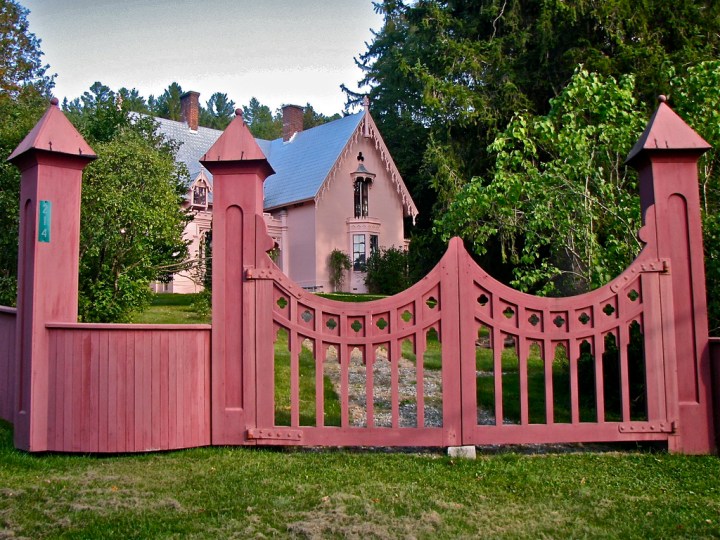
The Justin Smith Morrill Homestead is the historic home of United States Senator Justin Smith Morrill in Strafford, and was one of the first declared National Historic Landmarks, in 1960. It is a Vermont State Historic Site owned by the Vermont Division for Historic Preservation, a state agency, and is open for tours from May to October. The Morrill Homestead is set on 3 acres of land on the east side of Justin Morrill Memorial Highway, just south of the village green and the heart of Strafford Village.
The property includes, in addition to the main house, several barns and sheds as outbuildings, and is set off from the road by a flush-boarded fence with granite posts, all painted a reddish color. The interior features elaborate mahogany woodwork, and is predominantly Gothic Revival in character (matching the building's exterior) and the original furnishings and Morrill family possessions remain in the house including furniture, linens and kitchen implements. The interior walls have seen only minimal alterations, which have generally been limited to maintenance such as new coats of paint. Exterior alterations are similarly modest, including the replacement of rotted trim elements with matching materials. A wonderful place to visit and explore.
The property includes, in addition to the main house, several barns and sheds as outbuildings, and is set off from the road by a flush-boarded fence with granite posts, all painted a reddish color. The interior features elaborate mahogany woodwork, and is predominantly Gothic Revival in character (matching the building's exterior) and the original furnishings and Morrill family possessions remain in the house including furniture, linens and kitchen implements. The interior walls have seen only minimal alterations, which have generally been limited to maintenance such as new coats of paint. Exterior alterations are similarly modest, including the replacement of rotted trim elements with matching materials. A wonderful place to visit and explore.
Advertisement

Rokeby Farm is an historic farm property and museum is nestled on a 90-acre property which includes a 1780s farmstead, and eight agricultural outbuildings with permanent exhibits. Hiking trails cover more than 50 acres of the grounds. The property was designated a National Historic Landmark in 1997 for its association with Rowland T. Robinson, a Quaker and ardent abolitionist who openly sheltered escaped slaves here as part of the Underground Railroad. Robinson's extensive correspondence is an essential archive giving insight into the practices of abolitionists and the operations of the railroad.
Advertisement
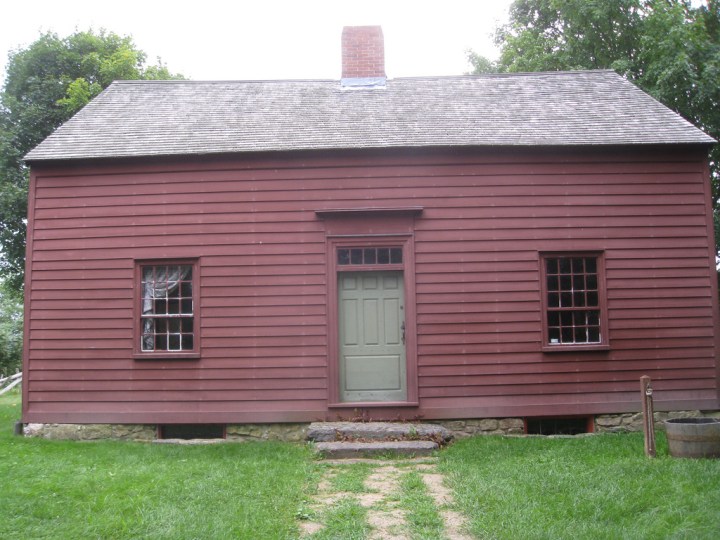
Ethan Allen, who has become a folk hero in Vermont, was one of the early inhabitants of Burlington and lived on the property in the Winooski River Intervale. He made a very significant contribution to the early history of Vermont, as well as the entire emerging nation. The tours here are exceptionally informative, providing a variety of facts and stories. The Ethan Allen homestead offers hands-on history, spectacular scenery, and riverside picnic areas and walks, providing a genuine slice of 18th century life and an intimate look at Vermont's most colorful - and controversial founders.
The homestead tour begins in a re-created colonial tavern where you are introduced to Vermont's history from disputes over royal charters in the 1760s through the American Revolution and Vermont's struggle for sovereignty in the 1780s and 90s. Inside the Allen House you will see some of the daily tasks and skills required to survive on the colonial frontier, as well as an introduction to Ethan's philosophical writings and land speculation activities. Experience the cramped conditions and gain a new understanding of the lives of the people living in the 18th Century. The tour is exceptionally informative, providing a variety of facts and stories.
The homestead tour begins in a re-created colonial tavern where you are introduced to Vermont's history from disputes over royal charters in the 1760s through the American Revolution and Vermont's struggle for sovereignty in the 1780s and 90s. Inside the Allen House you will see some of the daily tasks and skills required to survive on the colonial frontier, as well as an introduction to Ethan's philosophical writings and land speculation activities. Experience the cramped conditions and gain a new understanding of the lives of the people living in the 18th Century. The tour is exceptionally informative, providing a variety of facts and stories.
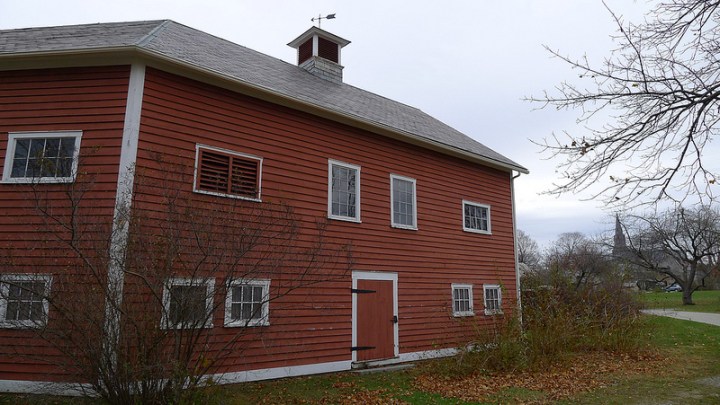
The Dutton House, located on the grounds of the Shelburne Museum, portrays the home of an 1820s New England entrepreneur and his family. The house was built by Salmon Dutton in Cavendish, Vermont in 1782 and served as both as family residence and as headquarters for commercial activities, including a tavern, inn, and office space for other enterprises.
The core of Dutton House is a saltbox, but Dutton’s descendants added wings that make the house a classic example of continuous architecture.
Dutton House was moved to the Shelburne Museum in 1950 when a road-widening project threatened the structure. It was the first dwelling relocated to the Shelburne Museum grounds. Outside is the Polly Cropper Mallory Heritage Garden, planted with early 19th-century varieties of vegetables and perennials.
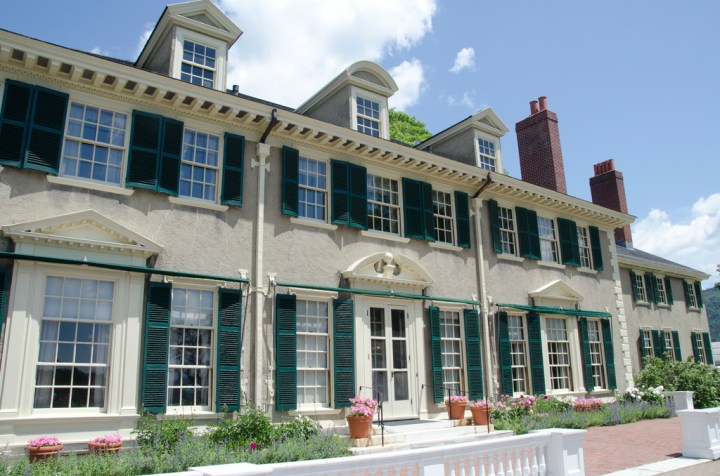
Hildene was the Lincoln family home for generations. It was built by Abraham Lincoln's eldest son, Robert Todd in 1905, and the estate offers a wonderful tour, beautiful grounds and stately gardens overlooking the Battenkill Valley. There are many other points of interest in this estate such as the fully restored, working (and used still today!) observatory built on the grounds, as astronomy was one of Robert Todd Lincoln's passions. His father may have been born in a log cabin, but Hildene is a far cry from that!

The country’s 30th president, Calvin Coolidge was born and raised in the small town of Plymouth Notch. The town, which has undergone little change since the early 1900s, will take you back in time. View the one-room schoolhouse where Coolidge got his education, the cheese factory run by his father, the Coolidge homestead and the house where he was born.

The Emma Willard House is named after a pioneer in women's education who founded a school for girls on the premises in 1814. It's now part of Middlebury College and was declared a National Historic Landmark in 1965. The building itself is a handsome brick house built in Federal style with Greek Revival touches.
Advertisement
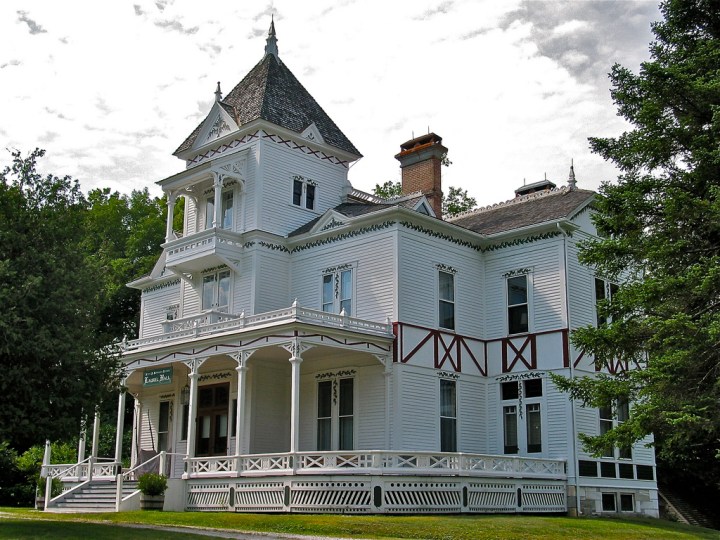
A magnificent Victorian summer residence called Laurel Hall was built in 1882 in Shrewsbury. While the house itself is impressive, it may not be the place for you to go exploring if you’re afraid of ghosts. It is believed that Mrs. Bowman is still around and haunts on a regular basis

The White House mansion was constructed in 1915 by Martin and Clara Brown as a summer home in Wilmington, Vermont for their growing family. Originally named "Beaver Brook" after the bubbling brook on the property, the home was designed expressly for entertaining guests – a tradition that continues today.
Martin Brown grew up nearby in Jacksonville, Vermont and went on to make his fortune in the lumber business. In many ways, he represents the quintessential American dream; his story is a Vermont rags to riches tale. The home remained in the Brown family until 1965 when Clara Brown passed away. At that time, the estate was sold and converted into an elegant country inn.
What is your favorite historical home in Vermont? Like and let us know!
OnlyInYourState may earn compensation through affiliate links in this article. As an Amazon Associate, we earn from qualifying purchases.



